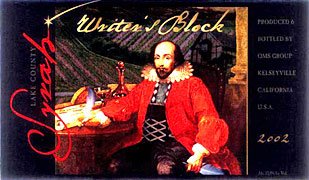New Zealand Appeal
Just to get this out in the open, I realize I'm dangerously close to idealizing a place I've never been. So, could I be looking at New Zealand pinot noirs through "rose-colored" glasses when I say that New Zealand pinots could become every bit the cult favorite that New Zealand sauvignon blancs are today?

I just had an '03 Stoneleigh Marlborough pinot noir, not a premium pinot by any means, last night with dinner. This excellent value wine was terrific in the expected ways, but it also came with a few surprises. It had the ripe, tart cherry and berry flavors I expected from a New World pinot right up front. But after 20 minutes in the glass, it gave off intriguing earth and leather aromas that enhanced my enjoyment of the wine even more.
If you read many wine journalists and bloggers, you'll find that a number eye New Zealand pinots with a bit of suspicion. The faint praise will be qualified with words like "correct," meant to say that the wines are well made in a commercially satisfying, non-distinctive way lacking any soul or terroir -- that elusive expression of place that so many serious wine buffs are looking for from their wines.
It's true that the Kiwis have not been at the pinot noir game very long. But I continue to be impressed. It's true that time will help New Zealand pinot noirs be even better and more complex. But consumers, in general, should not be intimidated into thinking that these wines are not yet worth trying. By the time New Zealand pinot noirs become really trendy, and they will, consumers will be paying more and will have missed out on the bargain that many are today.
Terroir is a wonderful thing, especially in a wine meant to accompany a meal with complex flavors enjoyed leisurely. But sometimes you just need honest, consistently delivered fruit in your wine for a decent price. That's all many consumers need, ever. You could do a lot worse than New Zealand pinots.











